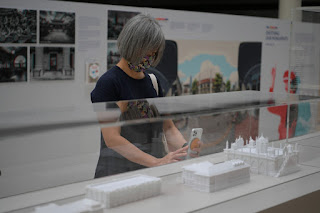Fort Siloso is now Singapore's 74th national monument
Fort Siloso played a crucial role in the Battle for Singapore, which marks its 80th anniversary this year. National Heritage Board
Fort Siloso played a crucial role in the Battle for Singapore, which marks its 80th anniversary this year.
To many, Sentosa is the epitome of sun, sea and sand, and has been that way for decades. The 500-hectare island resort proudly calls itself "The State of Fun", and rightly so. After all, it is home not only to Universal Studios Singapore, the S.E.A. Aquarium, and Singapore's first integrated resort, Resorts World Sentosa, it is also one of the choice destinations for beachgoers, adventure seekers and those in desperate need of an "overseas" getaway. Amid the fun, fun, fun, it's easy to forget (or conveniently ignore) one of the historic marvels on this island: the 19th-century Fort Siloso, which has just been gazetted - on Total Defence Day (15 Feb), no less! - as a National Monument.
This means the site - along with 73 other National Monuments including Hajjah Fatimah Mosque, Sri Mariamman Temple, CHIJMES and Victoria Theatre - will be accorded the highest level of protection.
Fort Siloso
Located on the western tip of Pulau Blakang Mati (known today as Sentosa Island), Fort Siloso was one of the many coastal fortifications built around the 19th century by the British and remains the most intact fortification in Singapore. The Fort was built on Mount Siloso, where the name “Siloso” is said to be derived from a Malayan word meaning “rock”, a possible reference to the rock outcrops that once stood at the western entrance to the present-day Keppel Harbour.
Built in 1878, it was one of three forts (the other two being Fort Connaught and Fort Serapong) that had been constructed on the island to protect the New Harbour (later renamed Keppel Harbour) and the straits around Singapore. The Fort played an important role in the Battle for Singapore and served as a Prisoner-of-War camp during and after the Japanese Occupation. In summary, the Fort performed a key defence function and bears testimony to Singapore’s military and war history.
Fort Siloso includes artillery and anti-aircraft emplacements, as well as machine guns, searchlights and command posts. There is also an extensive network of underground complexes (referred to as Tunnel Complexes A, B, C) as well as casemates built into the hill. It was part of one of the first coastal defence networks in the world that deployed multiple coordinated gun positions over several forts. This network included Fort Siloso, Fort Pasir Panjang, Fort Connaught and Fort Serapong. Together with Fort Tanjong Katong, they were all commissioned at the same time as part of a large-scale extension of Singapore’s defences to safeguard Singapore’s position as a strategic trading port. Preceding these Forts are Scandal Point (1819), Fort Fullerton (1830), Fort Canning (1859), Fort Faber (1859), Fort Palmer (1859) and Fort Teregah (1861).
National monuments of Singapore
For historical significance (World War II, self-independence of Singapore, transformation and the oldest memories to the structure), these buildings are not allowed to be demolished. The Preservation of Monuments Act gives the board authority to order preservation of such sites and promote research and public interest in the monuments.
The NHB is a statutory board within the Government of Singapore, under the jurisdiction of the Ministry of Culture, Community and Youth, and it has so far gazetted 74 buildings and structures as national monuments.
73 national monuments 'under one roof' at exhibition to mark S'pore's preservation efforts
Eleven of the monuments at the exhibition were painstakingly recreated using 3D-printed models. ST PHOTO: NG SOR LUAN
Singapore's 73 monuments are located across the island, but from Saturday (Nov 13) to Jan 2, they will all be "under one roof" - at an exhibition featuring renditions of them in various forms, from paper cuttings to 3D-printed models to virtual reality.
The exhibition at the National Museum of Singapore marks 50 years since the Preservation of Monuments Act came into force in 1971, which started the Republic's preservation journey through the formation of the Preservation of Monuments Board.
It is today known as the Preservation of Sites and Monuments division under the National Heritage Board (NHB). Eleven of the monuments at the exhibition were painstakingly recreated using 3D-printed models by Mr Matt Chiu, 29, a graduate from the Singapore University of Technology and Design (SUTD).
related: Definition of national monuments to be expanded, allowing sites like the Padang to be gazetted
National Monuments of Singapore
Our National Monuments are an integral part of Singapore’s built heritage, which the National Heritage Board (NHB) preserves and promotes for posterity. They are monuments and sites that are accorded the highest level of protection in Singapore.
Golden Mile Complex gazetted as conserved building
The 48-year-old building resembles a typewriter with its terraced facade and represents the architectural and engineering prowess of Singapore's pioneer building professionals
Minister for National Development Desmond Lee on Friday (Oct 22) announced that the 16-storey building has been gazetted as a conserved building, one year after the Urban Redevelopment Authority (URA) had proposed to do so.
To address concerns from building owners that conservation may affect the chances of a collective sale, the URA will offer a package of incentives to make development options for the site more attractive to potential buyers.
related:
Farewell Golden Mile Complex? Residents open up about their love-hate relationship with the landmark
related:





